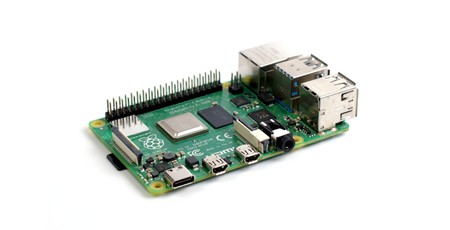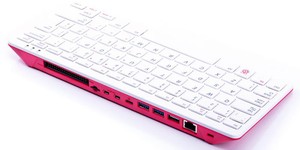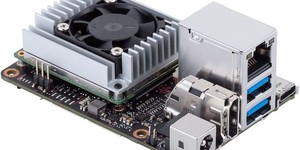Raspberry Pi 4 brings new GPU, USB 3.0, 4K
June 24, 2019 | 07:00
Companies: #broadcom #raspberry-pi-foundation

The Raspberry Pi Foundation has launched the fourth generation of its eponymous single-board computer family, imaginatively called the Raspberry Pi 4 - and it's a considerable upgrade over its predecessors.
First released in 2012 and initially based around an old design of set-top-box chip from Broadcom, the Raspberry Pi has proven a massive success: According to figures released by the Raspberry Pi Foundation the Raspberry Pi Family accounted for 2.5 percent of the global PC market in the fourth quarter of 2018. In the years since selling out its initial production run, the Foundation has tweaked the design and specifications a number of times - going from a 32-bit 700MHz single-core processor and 256MB of RAM to the Raspberry Pi 3 Model B+'s 64-bit 1.4GHz quad-core processor and 1GB of RAM - and alternative form factors, including the ultra-compact Raspberry Pi Zero and the industrial-focused Raspberry Pi Compute Module.
What hasn't changed over the years, though, is a major drawback of the design: A communication infrastructure that sees the system-on-chip (SoC) of every Raspberry Pi communicating with external devices over a single 480Mb/s USB 2.0 channel. For the Raspberry Pi 3 Model B+, which was the first in the range to boast 'gigabit' Ethernet, it's clear to see the problem: The Ethernet port is limited to around 230Mb/s throughput, which immediately plummets if you're writing or reading to a storage device connected to one of the board's four USB ports.
The Raspberry Pi 4, the first of a new generation of single-board computers from the company, is the first to change that. The SoC has been redesigned from the ground up, replacing the 480Mb/s USB 2.0 channel with around 5Gb/s of external bandwidth - enough to drive the gigabit Ethernet port at full speed while also having enough grunt spare to upgrade two of the four now-independent USB ports to USB 3.0.
Internally, the SoC has been upgraded to a quad-core Arm Cortex-A72 processor running at 1.5GHz and with a Broadcom VideoCore VI graphics processor - the first model in Raspberry Pi history not to use the ageing Broadcom VideoCore IV. The upgraded GPU is linked to two micro-HDMI ports, each capable of driving an independent display at 4K30 - or, with a little overclocking and the understanding that video corruption may occur if you exceed the bandwidth available to the hardware video scaler, an unofficial twin-display 4K60 - or a single display at 4K60. There's a hardware decoder for H.265 (HEVC) video, too, which can handle 4K60 content - though that's the only 4K format the machine is able to play, with all other codecs limited to lower resolutions.
As well as dropping the USB bottleneck, the redesigned SoC - given the identifier Broadcom BCM2711B0 - includes LPDDR4 support, driving 1GB, 2GB, or 4GB of memory depending on model chosen, the first time more than 1GB has been available to Raspberry Pi users. The radio has been upgraded to offer Bluetooth 5.0 support, too, and even the microSD interface has been overhauled with DDR support for roughly twice the throughput of its predecessors.
Detailed benchmarking shows a wealth of improvements from the new design, though at the cost of increased power requirements - handled by the switch to a USB Type-C connector rated at 3A - and heat output, a continuing trend for the Raspberry Pi family.
The Raspberry Pi 4 is available worldwide now, the not-for-profit Raspberry Pi Foundation has confirmed. UK pricing varies by retailer, but the Foundation has set prices at £33, £43, and £53 (all inc. VAT) for the 1GB, 2GB, and 4GB variants respectively in its Cambridge bricks-and-mortar store.

MSI MPG Velox 100R Chassis Review
October 14 2021 | 15:04








Want to comment? Please log in.